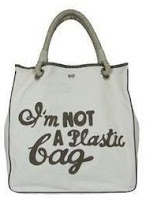Green Means Go
 No, this time I am not going to talk about the crappiness of the drivers in Louisiana, how they run the red lights and dawdle at the green, how they don’t use their blinkers, how they either drive 40 or 90 in a 60 mph zone… Nope, today I want to talk about saving the world, one drop of water/piece of paper/plastic bottle/gallon of gas at a time.
No, this time I am not going to talk about the crappiness of the drivers in Louisiana, how they run the red lights and dawdle at the green, how they don’t use their blinkers, how they either drive 40 or 90 in a 60 mph zone… Nope, today I want to talk about saving the world, one drop of water/piece of paper/plastic bottle/gallon of gas at a time.I read an article in Runner’s World about the little things that we can do to help save the environment: turn off the water while you are brushing your teeth, flush the toilet only half the time, print of both sides of each unimportant sheet of paper, either use tap water or buy gallon jugs instead of buying individual bottles of water, and for goodness sakes – RECYCLE!
These are all very easy things to do and if each of us takes the time to do them, we will make the world a better place for everyone. I for one am trying to do these things when I can; I am trying to do my part for the sake of the greater good. However, living in Louisiana does not make it easy.
I was watching the news the other night when this came on: “Brad Pitt wants to help rebuild New Orleans one green house at a time. The actor, who has been involved with the Global Green USA project, sat down with NBC's Ann Curry to talk about his passion for the environment and his adopted hometown.” (click here for more info) Go Brad! I applaud his willingness to protect the environment and to use his celebrity status to promote something so great.
However, and this is one of the annoying things I have noticed while in Louisiana, there is a long way to go before the people around here are going to adopt such things as a “green” house. The people of Louisiana are not the most environmentally friendly. Did you know that they don’t even recycle? And no folks, this is not because of Hurricane Katrina, although it would be easy to blame it on that. This is just the way it is. In order to make sure I was not misinformed, I checked to see what I, or the Louisiana residents could do if we wanted to recycle.
The Department of Environmental Quality (DEQ) site gives many tips on what you can do to start your own recycling program in your neighborhood, which are all very helpful. However, many times people will not do something unless it is very easy for them to do so. Put a bin out with sections for cans, bottles and trash, and nine times out of ten, people will throw things into the right section. Put the recycling center 3 miles away, and most people will not separate their own stuff and take it over there.
So what do we do? How do we make a difference? Well, like I said before, one by one, each of us separately can do our part and together, we can make an impact. Here are the top 10 things www.livescience.com suggests we each do:
1. Change your light bulbs
2. Drive differently, or drive a different vehicle
3. Control your temperature
4. Tame the refrigerator monster
5. Twist some knobs
6. Plant smartly
7. Invest in green energy
8. Go organic
9. Recycle
And LAST BUT NOT LEAST….
10. Be a minimalist
P.S. On this anniversary of 9.11, I want to say thanks to the heroes.


